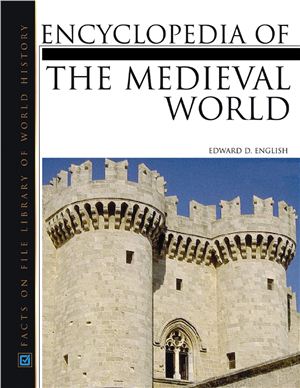Facts on File, 2005. - 920 pages.
Having already published Encyclopedia of the Middle Ages, by Matthew Bunson, in 1995 (now out of print), Facts On File offers this new work by a professor of medieval history at the University of Califoia-Santa Barbara. It covers the time period from the late antique world to about 1500 C.E and includes events, people, institutions, and culture in weste and easte Europe, Scandinavia, North Africa, Byzantium, and the Near East. The 2,000 entries discuss significant people, art, politics, literature, religion, economics, law, science, and warfare in an A-Z format. The articles range in length from a few sentences to one page. All have numerous cross-references and a list of further reading that includes both current and classic articles and books. The articles are aimed at students in high school and college so the language is direct and all concepts are explained. There are also 122 black-and-white illustrations, 19 maps, and 33 genealogical charts of the ruling houses of Europe. The volumes conclude with detailed lists of all the rulers of the various kingdoms, a 50-page bibliography, and a comprehensive index.
Reflecting recent scholarship, topics such as ecology, labor, and women are discussed much more fully than in earlier reference sources. Entries are interdisciplinary and refer to non-European and non-Christian cultures. For example, Universities and schools and Wills and testaments compare Christian ideas and practices to those in Judaism and Islam. Other articles, such as Kabbala and Kalam, bring out various aspects of Judaism and Islam. However, there are no overview articles on Christianity or the Catholic Church, or on medieval literature and poetry. Students will have to know the names of individual popes, saints, literary works, and so on. Some articles are curiously missing important see also references. For example, the brief Barbarians and barbarian migrations has no cross-references to Franks, Vandals, and other related entries.
Having already published Encyclopedia of the Middle Ages, by Matthew Bunson, in 1995 (now out of print), Facts On File offers this new work by a professor of medieval history at the University of Califoia-Santa Barbara. It covers the time period from the late antique world to about 1500 C.E and includes events, people, institutions, and culture in weste and easte Europe, Scandinavia, North Africa, Byzantium, and the Near East. The 2,000 entries discuss significant people, art, politics, literature, religion, economics, law, science, and warfare in an A-Z format. The articles range in length from a few sentences to one page. All have numerous cross-references and a list of further reading that includes both current and classic articles and books. The articles are aimed at students in high school and college so the language is direct and all concepts are explained. There are also 122 black-and-white illustrations, 19 maps, and 33 genealogical charts of the ruling houses of Europe. The volumes conclude with detailed lists of all the rulers of the various kingdoms, a 50-page bibliography, and a comprehensive index.
Reflecting recent scholarship, topics such as ecology, labor, and women are discussed much more fully than in earlier reference sources. Entries are interdisciplinary and refer to non-European and non-Christian cultures. For example, Universities and schools and Wills and testaments compare Christian ideas and practices to those in Judaism and Islam. Other articles, such as Kabbala and Kalam, bring out various aspects of Judaism and Islam. However, there are no overview articles on Christianity or the Catholic Church, or on medieval literature and poetry. Students will have to know the names of individual popes, saints, literary works, and so on. Some articles are curiously missing important see also references. For example, the brief Barbarians and barbarian migrations has no cross-references to Franks, Vandals, and other related entries.

